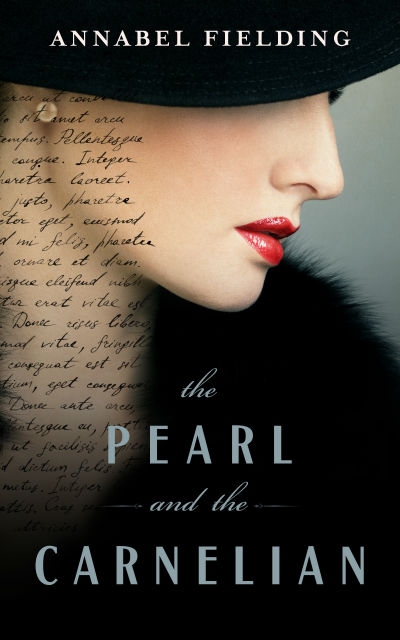You have no items in your cart. Want to get some nice things?
Go shopping
Our current political climate is becoming increasingly polarised. As we seemingly edge closer to the borders of extreme ideologies, many people are left harbouring feelings of alienation and antipathy towards the other side. This is why new novels such as The Pearl And The Carnelian by first-time author Annabel Fielding are more important than ever. Within these pages, Fielding explores the attraction of power, issues of class and racial prejudice and brings about pertinent questions on how hatred seeps in and distrust can seize a nation.
The book begins in 1934. Over in Europe, Hitler is rapidly gaining power. Back in the UK the fascists are mobilising themselves under the leadership of aristocrat Oswald Mosley. Hester Blake, our protagonist, is an ambitious girl from an industrial Northern town. She finds a job as a lady’s maid in the aristocratic Fitzmartin household. Lady Lucy Fitzmartin, her patron, is a rich, intelligent young woman with lofty ambitions for political influence.
‘Much of the inspiration for the novel came from being angry at the existing state of historical dramas,’ says Fielding. ‘I was left feeling bitter over period pieces that followed in the wake of Downton Abbey. A lot of them are set in the interwar period, and, if they featured a Nazi sympathizer at all, they usually portray them as part of a loony fringe group, or more frequently – some unhinged fan girl, a sudden blot on the beautiful world, inhabited by our virtuous protagonists.’
Fielding’s rejection of the clichéd period drama begins with her antagonist. Lady Lucy is the classic would-be-dynamite-if-only-she-were-a-man character. However, Fielding’s treatment of her is subversive: instead of valiantly proving her success against the odds stacked against her, Lucy takes a darker turn and falls under the spell of Mosley’s extremist views. ‘Stories of driven, magnificent individuals descending into darkness have captivated us since the days of Shakespeare,’ says Fielding ‘I wanted to create a passionate and talented protagonist, who could make the reader think “how have you have fallen.” I also wanted to explore the allure of the extreme ideologies. They are extraordinarily seductive; they offer simple solutions, clear divides and easily defined ideals. This glorious simplicity was – is – powerful enough to capture even the most intellectual of minds.’ The result is an altogether more fascinating character: the study of what makes a woman a villain, what goes into the destruction of her character, and what is going on inside her head when she makes such decisions about life and love.
Hester’s character is equally undermining of the clichéd portrait of the working classes in period dramas. ‘I found myself irritated by the saccharine world “downstairs” we usually see in fiction and on TV. After reading memoirs from those who served in the great stately homes, I found quite a different story. Some of them, of course, were genuinely fond of their employers, but it was hardly the unquestioning loyalty we usually see portrayed. I wanted to create a “downstairs” character who had her own joys and ambitions beyond being a good girl for her masters.’
The novel also fits into the LGBT sub-genre, with a lesbian romance between the two central characters. It is an unbalanced relationship where we can find themes on class prejudice taking root within an intimate setting, rather than as a vague societal issue.
The historical detail throughout the novel is staggering, ‘The research took me about a year and a half,’ says Fielding, ‘I started with general history books such as We Danced All Night: A Social History of Britain Between the Wars by Martin Pugh. I used biographies, such as Anne de Courcy’s Viceroy’s Daughters, which follows the Curzon sisters, or her account of Diana Mitford’s life, which I loosely based Lucy’s character on. I also relied greatly upon the memoirs like The Lady’s Maid: My Life in Service by Rosina Harrison. The real difficulties started when I started looking for information about the British fascist movements. These are the topics no one really wants to talk about, I had to delve deep into the world of obscure academic articles and semi-intelligible MI5 archives.’
It feels to me that Fielding strives against the romantic notions of British history, when pressed on this she replies, ‘I wanted to dig deep. No evil simply springs up in the middle of a perfect world. The evil grows from its very soil; it’s nourished by its very culture. The relationships between Britain and the fascist regimes of the Continent are often imagined in terms of inherent adversity. It is a reassuring tale of a sensible, egalitarian society inevitably triumphing over the violent and reactionary ones. In reality, most British supporters of the “new Germany” were powerful old men, usually MPs and industrialists. National newspapers saw nothing shameful in singing praise to the Continental dictators as well as to home-grown fascist movements. It would be misleading to think that our society possessed, or possesses, some kind of supernatural immunity against fascism. As history shows us, this is simply not the case.’
The Pearl And The Carnelian exposes uncomfortable truths about our societies previous relationships with oppression, prejudice and extreme politics, but they are crucial truths that can help us to understand each other and navigate the difficult terrain of politics today.
The Pearl and the Carnelian by Annabel Fielding is out now, priced £12.30 in paperback and £4.61 as an eBook.
About Emma Nuttall
Emma has been writing now for over four years and she still hasn’t finished. Some of her stories have been published, some of her journalism too, some have even won prizes.



